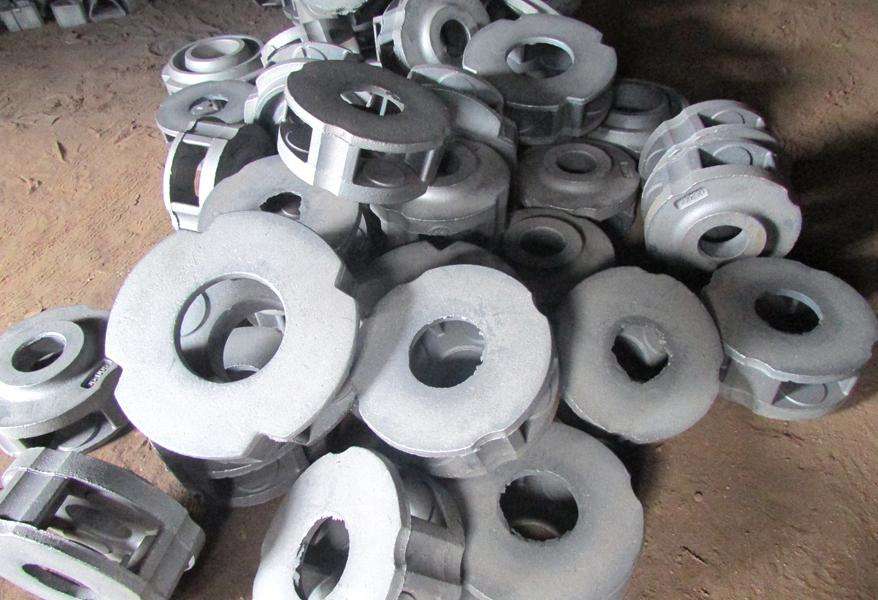+86 311 85258258
+86 311 85258258
Apr. 19, 2022

Gray Iron, named so because of the gray color it displays when fractured. This is primarily due to the presence of graphite within. Based on its weight, gray iron is the most widely used cast material. It is also the most common of the cast irons used. Gray iron castings offer a multitude of uses.
When stiffness is more important than tensile strength, Cast Iron’s ability to resist deformation in response to an applied force such as internal combustion, it is ideal for making components such as engine blocks, valve bodies, pump housings, etc.
Very common as an engineering alloy, Gray Iron is typically low in cost. It is also machine friendly, this is a result of the graphite becoming a lubricant, which allows the cut to become lubricated and the chips to breakup. Other benefits of using Gray Iron is galling, wear resistance, damping capacity, less solidification shrinkage, easy to weld, etc.
Gray iron castings are preferred when seeking a durable, low-cost solution, with heat dissipation, and high density. Gray iron has a good fluidity and is easily machined.
Because of some of Gray Iron’s characteristics, such as, strength and ductility, its shock and impact resistance are nearly non-existent when compared to more modern iron alloys.
Gray iron derives its properties from flake graphite in its microstructure. Its unique attributes include excellent machinability. When the composition of the molten iron and its cooling rate are suitable, the carbon in the iron separates during solidification and forms interconnected graphite flakes. The graphite grows edgewise into the liquid and forms the characteristic flake shape. The properties of gray iron also are influenced by the relative hardness of the metal matrix, which is the iron that surrounds the graphite. Microstructural properties are primarily controlled by the carbon and silicon content of the metal and the cooling rate of the casting.
Gray iron does not have a measurable yield strength, the range for tensile strength is 20,000 psi – 60,000 psi.
The relative ability of a material to absorb vibration is evaluated as its damping capacity. The quelling of vibration by converting the mechanical energy into heat can be important in structures and devices with moving parts. Components made of materials with a high damping capacity, like gray iron, can reduce noise such as chatter, ringing and squealing, and minimize the level of applied stresses.
For many years, Zen Young Foundry has been providing customized metal casting services for various industries and project types.
Mining & Engineering Machinery Casting Parts
If you are looking for a solution that fits your custom metal Sand casting project, Zen Young can help you produce perfect metal parts through a reliable casting process.
We always welcome special material and difficult parts and would like to help our comstomers utmost.
The material used to make molds for sand casting is sand, not ceramics. Due to the roughness of sand, sand casting is most commonly used for large castings, which usually require less detail precision and tolerances.
Shell mold casting is a metal casting process similar to sand casting, in that molten metal is poured into an expendable mold. However, in shell mold casting, the mold is a thin-walled shell created from applying a sand-resin mixture around a pattern. The pattern, a metal piece in the shape of the desired part, is reused to form multiple shell molds. A reusable pattern allows for higher production rates, while the disposable molds enable complex geometries to be cast. Shell mold casting requires the use of a metal pattern, oven, sand-resin mixture, dump box, and molten metal.
Investment casting is one of the traditional casting methods. That is, the metal is heated to the temperature of the molten liquid, and then the material is poured into a mold designed with a suitable negative space and gated to effectively completely fill the molten metal. Once the metal has cooled and solidified, the metal part can be removed from the mold for finishing. Investment casting, also known as lost wax casting, is usually used to make jewelry and metal parts with complex shapes.
Die casting is a kind of metal casting process, which is characterized by forcing molten metal under high pressure into the forming cavity. The cavity is made using two hardened tool steel molds, which have been processed into a certain shape, and die casting works similarly to injection molds.
Lost foam casting is a type of evaporative pattern casting. it maintains outstanding advantages, especially in casting complicated and precise molds. Unlike traditional methods which include the pattern withdrawal process before casting and require skillfulness in the pattern removal step, with respect to the lost foam method, the pattern is evaporated when the molten metal is poured into helping to reduce these considerations.
We will choose different casting methods for processing according to the product shape, material, and working conditions. Many years of processing experience can guarantee the quality of the casting parts.